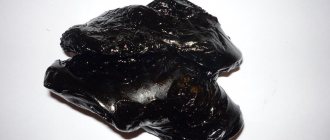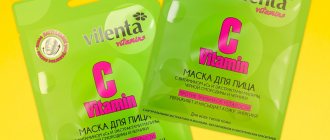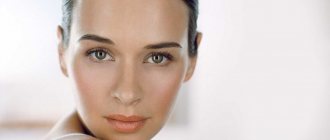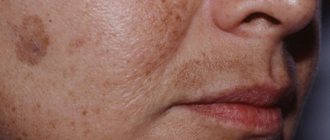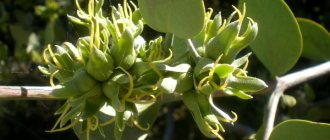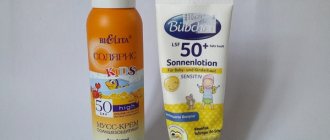- What is arbutin
- Composition of arbutin and forms used in cosmetics
- Beneficial properties of arbutin
- Contraindications
- Top Korean products with arbutin
We continue to introduce readers to the most common cosmetic components of Korean care. Today we will talk about a product that can eliminate hyperpigmentation, excessive melanin production, and not only lighten, but also significantly rejuvenate the skin. Yes, we are talking about arbutin - one of the most active components of cosmetics produced in Korea. Let's figure out the secret of its effectiveness and why arbutin is so widely used in cosmetology.
What's happened
Arbutin is a natural skin lightening and whitening agent. Naturally occurring hydroquinone derivative. It is considered to be one of the best alternatives to hydroquinone as it provides brightening benefits without the risks. When this product is applied to a surface, it is converted to hydroquinone through a process called hydrolysis. This is hydroquinone, which prevents the production of tyrosinase, which reduces the production of melanin (pigmentation) in the dermis. Due to its conversion to hydroquinone, the effects of arbutin are milder due to its slow release. In turn, it takes a long time for it to show visible improvements in pigmentation reduction.
Basically, brown spots are caused by pigments that are produced in cells called melanocytes, which contain enzymes called tyrosinase.
Dark spots can be activated upon contact with ultraviolet light. Freckles and sun darkening occur when there is too much sun. Arbutin comes to the rescue by blocking tyrosinase.
Arbutin vs kojic acid
Now let's compare arbutin with another popular remedy for hyperpigmentation. Kojic acid is available over the counter and is often found in lightening formulas.
The acid is created as a byproduct during the formation of fermented rice and is then concentrated in large quantities and placed into cosmetics.
Kojic acid works similarly to arbutin by inhibiting the enzyme tyrosinase. But these substances are different in effectiveness.
Some studies point to the fact that kojic acid has a stronger skin lightening effect than arbutin when the two are compared head-to-head for treating hyperpigmentation like melasma.
But this doesn't always mean you need to use kojic acid instead of arbutin.
The main disadvantage of using kojic acid is its instability in cosmetics. Over time, it is more likely to degrade and become less effective due to external factors.
There are two main types of kojic acid in cosmetic products: kojic acid itself and kojic acid dipalmitate. The latter form does not degrade quickly, but gives very weak results.
Many manufacturers add a stable and cheaper version to their products. But the problem is that it is not as effective as regular kojic acid!
So, although arbutin is not as potent as kojic acid, it is much more stable in cosmetic products.
If you are on a budget, it is better to use arbutin instead of kojic acid due to its stability. You can use this product longer after opening.
Types in cosmetics
In cosmetics, this ingredient is present in different forms:
- Alpha arbutin is a purified and more effective form compared to beta arbutin. Perfectly whitens any skin, but expensive to produce. Only high-quality preparations contain this component. Has a stronger inhibitory effect.
- Beta-arbutin (unstable version) - often called without the "beta" prefix. Available in inexpensive means. If the alpha component is not written in the composition, then you can safely assume that the composition contains a beta version. Most care products contain plant extracts that contain arbutin, and not pure alpha. Popular in cosmetic preparations intended to lighten the epidermis, such as lotions, creams, night masks, serums, cleansers, for the treatment of dark areas, lightening.
- Deoxyarbutin is a synthetic form. Powerful antioxidant. It is 150 times more effective than kojic acid and 10 times more effective than hydroquinone. Harmless, stable, less cytotoxic, practically does not irritate the dermis and is well absorbed. The concentration recommended by experts in cosmetics is 0.1 – 3%. Despite all the advantages, it is practically not for sale.
Application in urology
Arbutins are the most powerful natural antiseptics. Under their influence, there are significantly fewer pathogens of urological infections. Their bactericidal properties are expressed in relation to gram-positive coccal bacteria and, most importantly, to gram-negative bacteria. After all, most often urological diseases are caused by gram-negative flora, which are very resistant to the action of most of the used uroseptics and antibiotics. The undoubted advantage of arbutin is its selectivity. Its antimicrobial properties appear only in relation to pathogenic ones, i.e. disease-causing microorganisms, while bacteria beneficial to the body do not undergo changes, and the microflora remains normal.
The therapeutic effect of arbutin is based on the bactericidal and diuretic properties of hydroquinone, formed in the body as a result of the hydrolysis of arbutin. Preparations containing arbutin are widely used in medicine to cure urolithiasis, prostatitis, pyelonephritis, cystitis, gastritis with reduced secretion, diarrhea, gout, etc.
History of appearance
In the past, the main skin lightening ingredient recommended by many dermatologists was hydroquinone. Controversy over its safety (it should not be used on darker areas; causes ochronosis; the FDA has declared it carcinogenic; it is currently banned in Europe, Australia and Japan) has sent specialists searching for alternative ingredients. We've got arbutin, the new brightening wunderkind in the dermatological world.
Like licorice root, mulberry, soybean extracts, kojic acid, azelaic acid, vitamin C and niacinamide, arbutin is an herbal ingredient for fading darkened areas. It is possible to obtain it synthetically or from bearberry and other plants. Shows antioxidant activity.
Usually combined with other skin brighteners such as kojic acid, vitamin C, niacinamide. They all work on a common principle leading to lightening. They have a greater effect when combined with each other.
Natural sources and obtaining arbutin
| Rice. No. 2. Lingonberry – a source of arbutin |
Arbutin is found in the leaves of plants such as wintergreen, lingonberry, bearberry, mulberry, and bergenia. It has also recently been identified in the leaves of Caucasian blueberries, which are used as a tea substitute. Young leaves of plants contain the most arbutin.
To obtain arbutin, the leaves of these plants are boiled in water, and tannins are precipitated from the resulting mixture. After evaporation, arbutin is released in crystalline form and treated with activated carbon.
What are they made from?
Arbutin occurs naturally in several different plants. Bearberry and mulberry have the highest concentrations. Good content in blueberry, cranberry, wheat and pear varieties.
Bearberry has been used for centuries in Europe and North America in traditional medicine. Before the discovery of modern antibiotics, it was considered one of the few known natural antimicrobial drugs. The antibacterial activity is due in part to the presence of arbutin. Traditionally used to treat urinary tract infections. Synthetic forms can be created through chemical synthesis or an enzyme-catalyzed process.
Skin Benefits
Because arbutin breaks down into hydroquinone, it improves the appearance of dark spots. It can be considered as an alternative to hydroquinone.
In addition to its innate inhibitory effects, arbutin acts as a reservoir that slowly releases hydroquinone. Once absorbed into the dermis, enzymes in the body cleave the sugar group from arbutin. This works as a built-in safety valve, preventing your skin from being exposed to too much hydroquinone at once.
Researchers have been studying arbutin's ability to inhibit tyrosinase in skin cells since the 1990s. There is promising scientific evidence to suggest that the ingredient is effective as a lightening agent. It is gentler than other skin whitening ingredients.
Other special properties include:
- Sun protection: exhibits the ability to reduce the degree of darkening of the skin after sun exposure by blocking the production of tyrosinase.
- Gentle on the skin: other lightening agents can dry out and irritate the epidermis, but this substance is less irritating.
- Improves uneven complexion: Inhibits tyrosinase, an enzyme that helps in the production of melanin. Prevents the appearance of dark spots and helps smooth them out.
- Safe for use with other skin care products: There are no known negative interactions between arbutin and other ingredients.
- Great for eliminating red-purple acne scars that remain long after the pimple has gone away.
- Fights freckles, hyperpigmentation, lentigo, melasma and chloasma.
Beneficial properties of arbutin
In addition to its pronounced skin-lightening properties, expressed by reducing melanin production, arbutin provides protection against UV radiation. Using cosmetics with the component gives the following effect:
- elimination of freckles and pigmentation of various types;
- whitening excessively tanned skin and returning dull skin to its normal appearance;
- has an antiseptic effect on the dermis prone to irritation and rashes;
- removes toxins and waste;
- eliminates swelling;
- evens out skin tone, restoring elasticity and softness;
- successfully used in the treatment of dermatological problems such as lentigo, melasma;
- interacts with most components without causing adverse reactions;
- Let's say in a complex composition with other lightening agents.
Arbutin eliminates types of pigmentation, regardless of origin. In Korean cosmetics it replaces more aggressive whitening ingredients. In addition, it acts safely and protects the skin from the negative effects of ultraviolet radiation.
How quickly results are visible when used
Depending on the depth of pigmentation, visible lightening effects can be seen after just 4 weeks. If you need quick results, then purchase drugs based on alpha-arbutin instead of other alternatives.
An important nuance - the result of lightening with arbutin is not permanent.
If you stop using it, the skin may return to its original state.
Because of this, it is advisable to combine different lightening ingredients for sustainable success.
Features of products with arbutin
Creams with arbutin act gradually. When applied to the skin, the active components are quickly absorbed, interacting with the enzyme tyrazinase, as a result of which the latter substance is not synthesized enough to stimulate melanin production. Problem areas of the skin gradually lose pigment and become lighter. Additionally, such drugs have an anti-inflammatory effect.
Preparations with arbutin are effective in the presence of freckles and small areas of hyperpigmentation. It is unlikely that it will be possible to remove old stains using such a product. It is also important to remember that applying creams with this component to sensitive skin is not recommended. The use of arbutin-based preparations for a month can significantly lighten areas of hyperpigmentation and improve the appearance of the skin.
Products with arbutin can be used if you have freckles.
The advantages of such funds compared to others:
- additional destruction of pathogenic microflora, which is important for acne;
- elimination of inflammatory processes;
- convenient way to use;
- Effective whitening of small age spots and freckles.
Flaws:
- the safety of the substance has not been proven;
- may cause irritation;
- not effective on large areas of hyperpigmentation.
Precautions when using such products:
- Do not apply cream to damaged or irritated skin.
- Do not sunbathe while using such products.
- When using creams with arbutin in the summer, protect the skin from ultraviolet radiation using special means.
- Do not use the cream for longer than the specified period.
- If the pigment spot itches and has an irregular shape, then you can use such products only after consulting a doctor.
- Do not use arbutin cream more than 2 times a day.
Attention! It is recommended to use products with arbutin after consultation with a dermatologist.
With age, my mother began to develop pigment spots. To eliminate them, she tried a cream with arbutin. Unfortunately, it was not possible to achieve a special effect in a few weeks, since the spots were old and quite large. I think the lack of results is also due to the fact that my mother likes to sunbathe often and for a long time, and this aggravates the problem. She plans to continue to use the cream, since such products do not produce an effect immediately, but only after 1–2 months of regular use.
Side effects
Understand that there were some people who were nervous about arbutin due to the similar brightening properties it has to hydroquinone.
According to dermatologists, arbutin produced from natural plants (not synthetic) is safe.
The latest opinion from the European Commission's Scientific Committee on Consumer Safety (SCCS) regarding alpha-arbutin states that it does not pose a risk when used. Harmless to consumers in cosmetic products in concentrations up to 2% in face creams and up to 0.5% in body lotions.
The skin does not have an alkaline environment, so arbutin does not hydrolyze to hydroquinone.
Derived from natural raw materials, it is safe for any type of elidermis.
Naturally, individual intolerance must be taken into account. Consultation with a dermatologist is recommended.
Contraindications
Opinions about the safety of using the substance differ and to date no single solution has been found. A contraindication to the use of skin whitening preparations with the active ingredient arbutin is individual intolerance and high sensitivity, since the likelihood of side effects will depend on the characteristics of the body.
It is recommended to use cosmetics with caution for people with dark skin, as this can cause the opposite effect - pigment spots can acquire a bluish-black color.
How to choose
- The undisputed leader in the production of cosmetics with arbutin is Thailand. Japan, France, and Greece are significantly behind it.
- When choosing a product, we need to determine the cause of age spots.
- We carefully study the composition. What type of arbutin. Which components are connected?
- Look carefully at the cost, which may be inflated by the brand.
- Study the certification - there must be international quality standards FDA, GMP, ISO.
- First, buy the minimum sample size. Check individual intolerances.
Below we provide a list of the best.
Differences between products by release form
Traditionally, the two best options with arbutin are cream and serum.
- The serum is suitable for melasma, deep purple hyperpigmentation from post-acne. Effective and economical for spot application.
- The cream is suitable for a large application surface. To even out the skin tone of the whole body with age spots, sun spots, freckles. It is recommended to use morning and evening for a month.
When choosing, it’s a good idea to pay attention to additional components of high-quality sun protection - titanium dioxide and zinc oxide.
To be completely confident in the safety of cosmetics against pigmentation, you should choose where the concentration of arbutin does not exceed 4%.
What are the contraindications for arbutin?
Some researchers believe that arbutin may contribute to cancer. However, other tests demonstrate that up to 75% of arbutin leaves the body during urination, and the remainder is insufficient to be carcinogenic.
It is believed that the substance in small doses heals the genitourinary system and protects it from infections.
To eliminate the possibility of dangerous consequences from the use of products containing arbutin, responsible cosmetic companies usually limit its concentration to 4% of the total volume of the product. In such quantities, arbutin is considered absolutely safe.
The best means
We selected five popular drugs based on reviews and price. Perhaps this is subjective.
Roland Face cream with arbutin and placenta
Suitable for facial skin care of all types. The main active ingredients are arbutin and placenta extract. Added shea butter and squalane. Country of origin: Japan. Volume 180 grams. Three in one: cream, serum, lotion. Whitening, moisturizing, antiseptic. Activates cellular respiration. Inhibits the formation of melanin. Well absorbed. 1400 rub.
Hada Labo Lotion Shirojyun Arbutin Whitening
Korean manufacturer.
It whitens the skin well, after application it feels light, moisturizes well, has a pleasant smell, and slightly evens out the surface from wrinkles. In addition to arbutin, the active substances are hyaluronic acid and glycerin. A definite plus - inexpensive cost of 650 rubles.
Anti-Melasma facial serum with arbutin Mela Klear
Significantly reduces pigmentation, eliminates freckles, pigmented age spots, and evens out the color of the dermis. The effective formula is able to penetrate deeply into the layers of the dermis and improve the tone and complexion. Rapid improvement. Price 480 rub.
Holy Land Whitening Cream
Country of issue: Israel. According to reviews, amateurs and professionals like it. Successful use for pigmentation. The cream from the Israeli brand has earned recognition from both consumers and cosmetologists. With grape seed oil. The average cost is 2700 rubles.
Series with Arbutin Dermo Active Complex from BeautyMed
The line includes a serum, a cream mask and a dermoactive whitening cream. Powerful drugs, the concentration of arbutin in them reaches 5%, which makes it possible to overcome severe pigmentation. Contains grape seed oil. Very good reviews.

